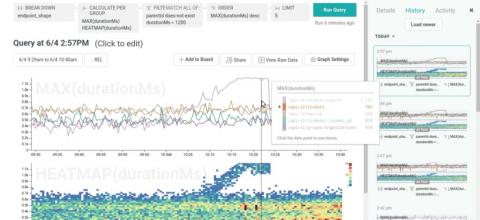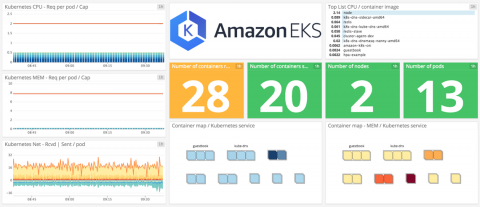Operations | Monitoring | ITSM | DevOps | Cloud
%term
Kubernetes, Data Science, and Machine Learning
Crash Course to Monitoring Kubernetes: The K8s Anatomy
It’s no secret that Kubernetes is the leader when it comes to container orchestration platforms. Since its 2014 release, the open source project has taken the world by storm and become one of the biggest success stories in the open source community.
An Azure Deployment Guide
Picking the right tools to handle the deployment will depend on your environment. Since there are so many ways to deploy to Azure services, we won't be able to get into the weeds, but I will cover enough so that you can hopefully find the right deployment solution for you.
Get deeper insights with Honeycomb Tracing
We’re excited to introduce Honeycomb Tracing! Now, you can both: Visualize individual traces to deeply understand request execution, and Break down, filter, and aggregate trace data to uncover patterns, find outliers, and understand historical trends.
Auvik Use Case #14: Differentiate Your MSP Services With Network Monitoring & Managemen
Gain Full Visibility into Microservices Architectures Using Kubernetes with Sumo Logic and Amazon EKS
Amazon Elastic Container Service for Kubernetes (Amazon EKS) is a managed service that makes it easyfor you to run Kubernetes on AWS without needing to install and operate your own Kubernetes clusters.
LogicMonitor
Monitor Amazon EKS with Datadog
Amazon Elastic Container Service for Kubernetes (EKS), the latest addition to the AWS platform, is a cloud-based Kubernetes service that provides features for automated cluster management and maintenance. Whether you are migrating an existing Kubernetes cluster or deploying a new application to Amazon EKS, Datadog can help you monitor your container infrastructure and applications in real time.
Elasticsearch Performance Tuning
Once you have your Elasticsearch running, you’ll likely eventually find that performance starts to suffer over time. This can be due to a variety of factors, including changes in the way you’re using your cluster to how much and what types of data are being sent in. In order to maintain your cluster, you’ll need to set up monitors to alert you to any warning signs so that you can proactively handle available maintenance windows.











